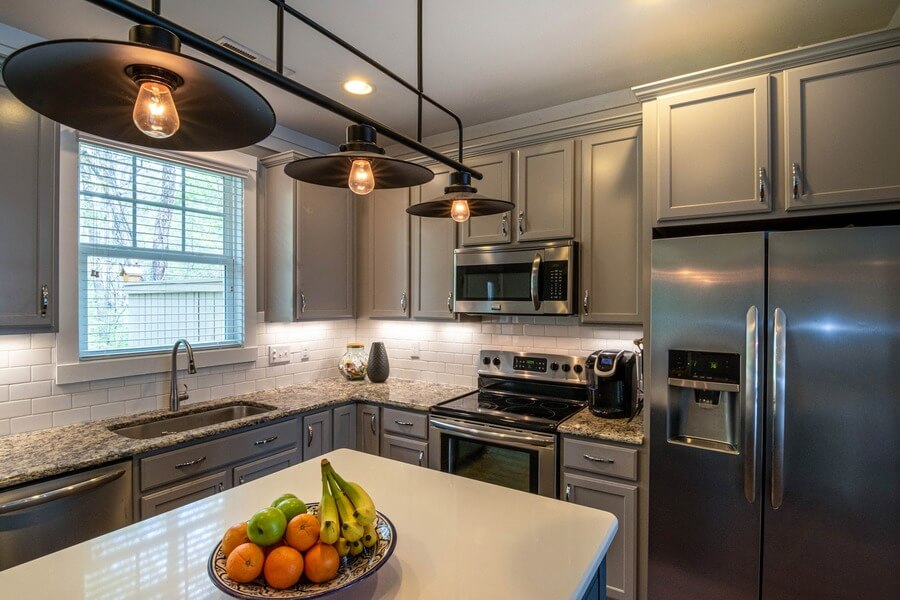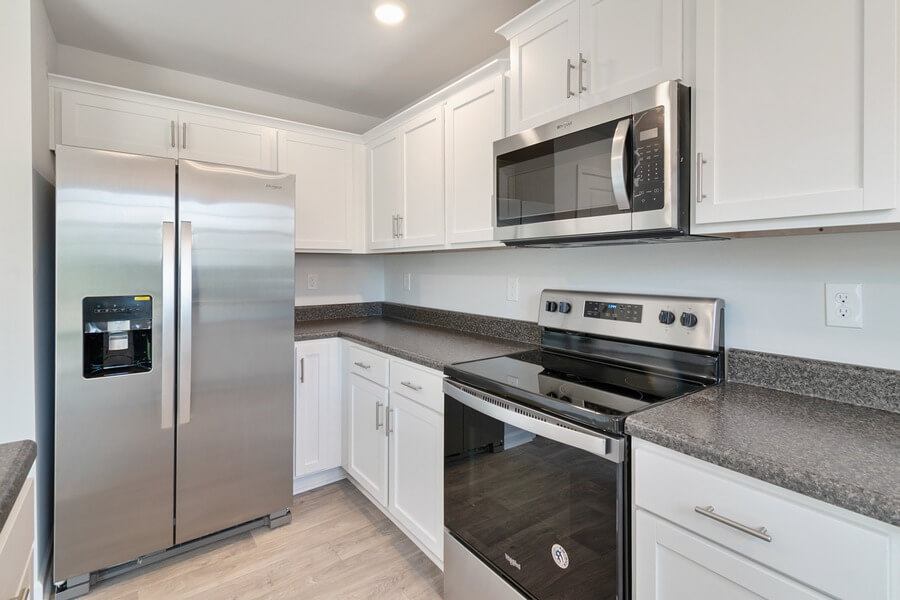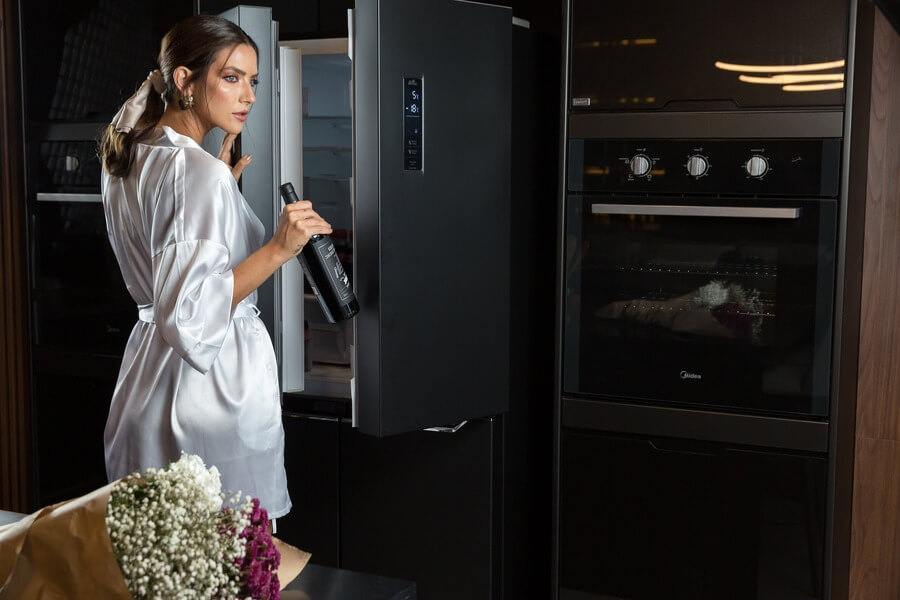Samsung refrigerators are some of the most popular models in the market. Known for their longevity, durable build, and elegant design, they offer the much-needed functionality any household kitchen may need. However, like other refrigerators, they are susceptible to malfunctioning.

For example, leaking water after changing the filter. This article explores common causes of a leaking refrigerator after changing the filter and provides practical solutions. The best part is that they are easy to follow and do not need technical prowess. So, let’s get into it.
Check For Proper Installation
First, you must ensure the water filter is installed correctly since wrong installation can lead to leaks. Here’s how to install a water filter.
Materials You’ll Need
- Bucket
- File
- Wrench
- 4-in-1 screwdriver
- Rag
- Slip joint pliers
How To Install A Water Filter
- Locate the water filter of your Samsung’s refrigerator. It should be at the bottom of the ridge, either inside it or in the upper-right corner of the refrigerator compartment.
- Once you’ve identified the water filter, turn off the water supply to the refrigerator. Locate the water supply valve behind the fridge and turn it to the off position.
- Twist the filter anticlockwise to unlock it.
- Pull the water filter straight down to remove it.
- Position the new filter in the filter housing, push it up, and turn it clockwise. Ensure the filter’s notch aligns with the filter housing’s arrow.
- Once locked in place, turn on the water supply.
- Run at least three gallons of water to flush out impurities and air. This is in a bid to achieve clean, fresh drinking water.
- Press the filter reset button for three seconds to reset the filter indicator light. Some Samsung models require you to press a combination of buttons.
- Monitor for any water leaks for the next day or two.

Inspect The Filter Housing
Another reason your Samsung refrigerator is leaking water after changing the filter might be due to a damaged filter housing. The housing might form cracks over time, leading to subtle but consistent water leaks. If you suspect a damaged filter housing is the cause, follow the following steps.
How To Install A New Water Filter Housing
- Gather the necessary materials and tools, such as a rag, screwdriver, and the replacement water filter housing kit.
- For safety, unplug your Samsung refrigerator from the electrical outlet.
- Locate the water housing. On some models, it may be in the back right corner of your refrigerator’s interior or the base grille. Please consult the user manual to know where it is.
- Remove the old housing. You’ll need to disconnect the water supply using pliers or a wrench. Unscrew the filter housing from the mounting clips.
- Depending on your model, you might need to disconnect electrical connections.
- Install the new filter housing by reconnecting the water supply line, mounting the new housing, and reconnecting electrical connections (if applicable).
- Ensure to mount the housing in place using screws or clips.
- Connect the water supply line to the filter as you check for any leaks.
- After installing new housing, purging air from the water supply is prudent. You should dispense at least three gallons of water to flush out impurities.
- Reconnect the refrigerator to a power source and reset the water filter indicator light.
Check For A Damaged Water Line
A damaged water line can also cause your Samsung refrigerator to leak water after changing the water filter. This can be due to an inlet valve clogging or bursting while operating. If the line is damaged, you must install a new one.
Materials You’ll Need
- Drill
- Pliers
- Adjustable wrench
- Rag
- Saddle valve
- Water line installation kit
- Faucet valve tee adapter
- Water tubing

How To Install A Water Line
- Determine the plumbing requirements of your refrigerator. You can determine this by referring to the user manual. Alternatively, you can pull the unit away from the wall. Depending on the model, you may find a compression or push-fitting connection. The former will have threads, while the latter has none.
- Locate the refrigerator’s water source. Most new homes will have the head behind the fridge.
- With the water source located, turn off the water supply to the refrigerator. All you need is to turn the shut-off valve clockwise. This will prevent water leakage when disconnecting the water supply.
- If yours has a compressing fitting, you’ll use the adjustable wrench to loosen the nut at both ends of the line. Turn the nut to the left and gently pull it out of the fittings once loose. If yours has a push fitting, you must depress the release collar and carefully pull the water line out of the fitting.
- With the old line out, it is time to install the new one. Ensure the tubing is the same length as the old one. You may also change the tube routing depending on your floor design.
- Next, connect the water line to your fridge. If your fridge has a push fitting, insert the end of the ¼-inch tubing into the refrigerator fitting. Make sure to press down until it fits tightly.
- If your fridge has a compression fitting, twist the water line’s female end to the refrigerator’s male threads. Twist it clockwise until it fits properly. You can then use the adjustable wrench for a tighter connection.
- Connect the water supply line to the water source. If your home has a dedicated water source for the refrigerator, connect the supply line to its male compression fitting.
- If you use a saddle valve, connect the compression fitting to the valve and twist clockwise to close the valve. Place the valve’s frame and gasket around the water supply line where the connection will be made.
- Finally, turn the water back on to flush the water filter system. Flush at least three gallons through the new line.
Inspect The Filter For Damage
Besides a damaged water line, a damaged filter can also cause the Samsung refrigerator to leak after changing the water filter. If you suspect the filter is damaged, you can follow the same procedure for installing a new water filter.
To prevent filter damage, make sure to choose a suitable model. You can get this info from Samsung’s website or the user manual. You should also change the filter as directed by Samsung. Ideally, it would be best if you changed it every six months.
Final Thoughts
As you can see, a leaking water filter can be due to damage, incorrect installation, or a damaged water line. We recommend following the user manual for your specific Samsung refrigerator model for replacement options.
Make sure to use a compatible filter or water supply line when making the changes. Turn the power supply to the refrigerator and the water supply for safety. This will prevent bodily injuries such as electrocution. If possible, wear protective goggles and gloves for improved safety.
